Tove Jansson, the ‘radically free’ artist who created the Moomins comic strip and lived outside of social conventions
The Community – a Parisian art collective – analyzes all the layers of this Finnish artist through an exhibition, going beyond her best-selling comic books. Jansson was a novelist, illustrator, queer pioneer and collector. Next year, actress Glenn Close will release a movie based on one of her books
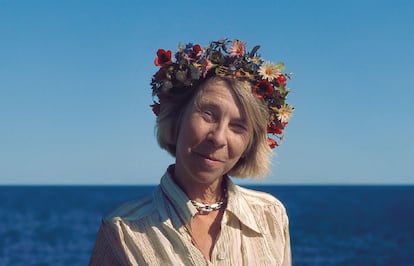

She lived by her own rules. She danced, swam in the nude and wore flower crowns in the icy waters of the Baltic Sea. She painted, wrote novels and drew comic strips.
Tove Jansson was born in Helsinki, Finland, in 1914. She lived until the age of 86, traveled the world and made an international name for herself, thanks to the Moomins: a friendly family of white-tailed trolls that she created. They first became a phenomenon in the Commonwealth, as Jansson’s comic strips began to run in the Evening News by the 1950s. Eventually, theme parks dedicated to the creatures appeared in Finland and Japan.
The profoundly kind characters that Jansson created at the beginning of World War II spoke about ecology, acceptance and coexistence. They also warned about the danger of nuclear weapons and the fear of the other. Jansson’s work — while appearing simple and naive — actually hid many layers and interpretations.
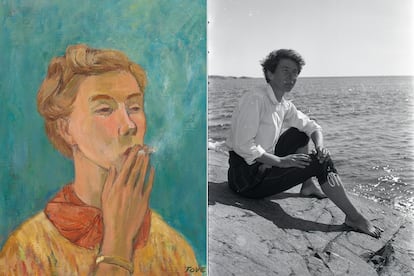
That is what the Houses of Tove Jansson exhibition in Paris wants to emphasize. From the outside, the art show looks like just another factory in an alley, next to the well-known Père Lachaise cemetery. But, as soon as you enter, by passing through some curtains, you encounter a small oil painting from 1940: it’s a self-portrait of Jansson smoking.
The groundbreaking creator was trapped in a paradox: she wanted to be recognized within the artistic world, despite having created the popular Moomin phenomenon. “It was frustrating for her. Fellow artists told her: ‘You continue with your drawings, you can make a living from that. Let us be painters.’ But she lived her life, she was radically free. This can be seen in one of her last self-portraits, from the 1970s. She looks old, without any fear of showing her age. It’s impactful,” explains Sophia Jansson, her niece and the president of Moomin Characters Ltd., which manages Jansson’s legacy.
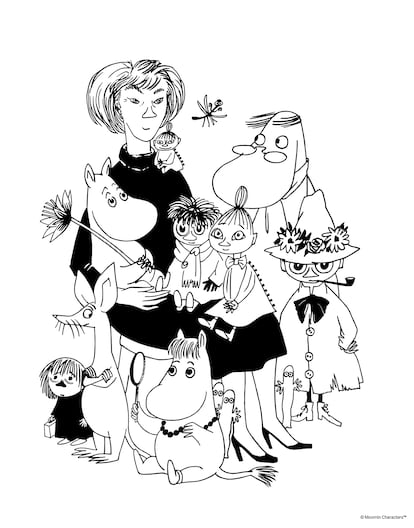
Jansson’s niece remembers that her aunt “was part of the first generation of Finns who were able to decide what to do in a totally independent and new state, a society that was building its own identity.”
Tove and her two brothers grew up in a bohemian family, in a Finland that had been independent of the Russian Empire since 1917. Her father was a respected sculptor and her mother an illustrator in the popular weekly political satire Garm. “At that time, there were many professions that weren’t yet open to women. She was revolutionary, she made decisions that were uncommon,” Sophia says. Her aunt, she reveals, kept diaries throughout her life, in which “she constantly questioned what she did, which were always quite radical things.”

Tove studied art in Stockholm and Helsinki and, in 1938, completed her training at L’École des Beaux-Arts in Paris. This period of time transformed her life, says Tuukka Laurila, curator of Houses of Tove Jansson alongside Sini Rinne-Kanto (both co-founders of The Community, a Parisian art collective).
“She loved this city. Her parents met here and this is where she explored the nightlife of the Rive Gauche, where lesbians gathered. It was an important place for her life, her work, her sexuality,” Laurila explains. One of the spaces of the Paris exhibition is dedicated, precisely, to the Rive Gauche — the southern bank of the river Seine — which Jansson used as a synonym for homosexuality in her letters. There are drawings showing her and her partner — the graphic artist Tuulikki Pietilä — with whom she shared a life for more than 30 years. “She had relationships with men and women and, in the end, she fell in love with a woman. Tuulikki was very important for her and her work — she was the wall on which she projected her ideas,” Sophia Jansson notes.
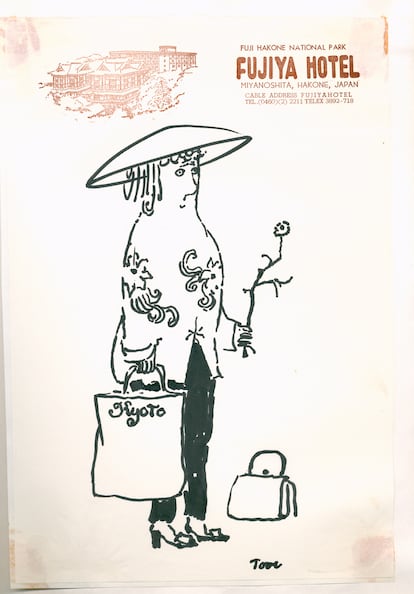
James Zambra — creative director of Moomin Characters Ltd. and great-nephew of the artist — remembers the two women well. The couple worked together in a studio that seemed like “a magical cave full of objects and shelves with books and cassettes.” For him, the Moomins were practically members of the family. “As a child, my mother read the stories to me in bed. It was the end of the 1980s and there was a Moomins boom around the world. The Japanese made an animated series, there was a lot of merchandising and — in my room — everything was Moomin, from the quilt to the pillows.”
These stories entailed themes, Zambra says, that are still valid today. “They talk about acceptance, inclusivity, alternative lifestyles. Moominvalley is a kind of parallel universe. It’s not a perfect utopia — it has its own problems — but very different characters and personalities live in it, and they’re all accepted as they are,” says Zambra.

But Jansson’s creative legacy goes far beyond her most famous characters. She wrote acclaimed books, such as the semi-autobiographical Sculptor’s Daughter (1968) and The Summer Book (1972), which have become classics in Finland. She also collected literary treasures, such as the first editions of The Hobbit, by J. R. R. Tolkien and Alice’s Adventures in Wonderland, by Lewis Carroll, which she illustrated.
Her unconventional life continues to attract attention. In 2020, Tove — a film about her beginnings — was screened at the Toronto Film Festival. And, next year, actress Glenn Close will star in a film based on The Summer Book, which deals with the relationship between a grandmother and a granddaughter who live apart from the world, in a cabin by the sea. Jansson herself spent large parts of her summers with her mother, Signe Hammarsten-Jansson, whom her children called Ham. She was one of Tove’s great inspirations — she showed her that a woman could do whatever she wanted. With her mother’s support, she worked as an illustrator and became a lover of the outdoors. Together, they went camping, rode horses and learned how to fire guns.

Keeping Jansson’s legacy alive (and faithful to her carefree spirit) is the goal of the company that is run by her family. To achieve this, Laurila highlights, informative initiatives about the different aspects of her work — such as the exhibition presented by The Community — are essential.
“We’re an artistic collective created in 2016. We seek to establish dialogues between different artistic disciplines, such as art, music, painting, architecture, fashion. We don’t want them to be watertight compartments, we seek a multidisciplinary approach,” Laurila explains.
To encourage generational dialogues, the exhibition reveals works by contemporary creators — such as Anne Bourse (France), Ida Ekblad (Norway), Cerith Wyn Evans (Wales) or Emma Kohlmann (New York) — who have been inspired by Tove Jansson’s work.
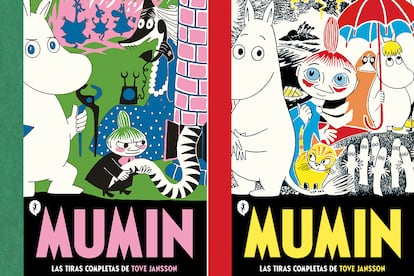
“For [Jansson], physical and domestic spaces were important. They were part of her work, as were the imaginary spaces she created, such as Moominvalley,” curator Rinne-Kanto emphasizes. She adds that Jansson and Pietilä lived in separate apartments connected by a hallway, which was used to hold exhibitions of the artist’s work. “For Jansson, having her own space — like Virginia Woolf’s room — was necessary,” she says.
The two women were independent but inseparable. They shared a cabin on an island and traveled the world together, making mixtapes of their favorite songs and street noises. “They collected cassettes — the stacks of tapes reached the ceiling — they danced a lot, they recorded on VHS, they collected everything, there was art everywhere,” Zambra recalls.
Jansson, he claims, discovered “an alternative way of living.” That universe was reflected in her famous Moomins, in her novels and in any paper at her fingertips. “Even on the shopping list, she would make small illustrations,” Zambra smiles. “Her own life was a work of art.”
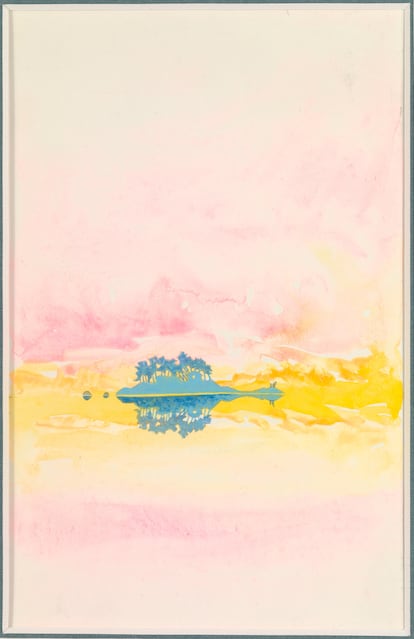
Sign up for our weekly newsletter to get more English-language news coverage from EL PAÍS USA Edition
Tu suscripción se está usando en otro dispositivo
¿Quieres añadir otro usuario a tu suscripción?
Si continúas leyendo en este dispositivo, no se podrá leer en el otro.
FlechaTu suscripción se está usando en otro dispositivo y solo puedes acceder a EL PAÍS desde un dispositivo a la vez.
Si quieres compartir tu cuenta, cambia tu suscripción a la modalidad Premium, así podrás añadir otro usuario. Cada uno accederá con su propia cuenta de email, lo que os permitirá personalizar vuestra experiencia en EL PAÍS.
¿Tienes una suscripción de empresa? Accede aquí para contratar más cuentas.
En el caso de no saber quién está usando tu cuenta, te recomendamos cambiar tu contraseña aquí.
Si decides continuar compartiendo tu cuenta, este mensaje se mostrará en tu dispositivo y en el de la otra persona que está usando tu cuenta de forma indefinida, afectando a tu experiencia de lectura. Puedes consultar aquí los términos y condiciones de la suscripción digital.
More information
Archived In
Últimas noticias
Welcome to the post-religion era: The idea of Christianity as the absolute truth has become obsolete
‘I thought you would like it’: The risky sexual practice popularized by TV shows and TikTok
The digitalization of tourism: ‘They promise experiences and gave us the worst possible one’
Mexican peso defies uncertainty with forecasts of a new period of stability in 2026
Most viewed
- Sinaloa Cartel war is taking its toll on Los Chapitos
- Oona Chaplin: ‘I told James Cameron that I was living in a treehouse and starting a permaculture project with a friend’
- Reinhard Genzel, Nobel laureate in physics: ‘One-minute videos will never give you the truth’
- Why the price of coffee has skyrocketed: from Brazilian plantations to specialty coffee houses
- Silver prices are going crazy: This is what’s fueling the rally










































